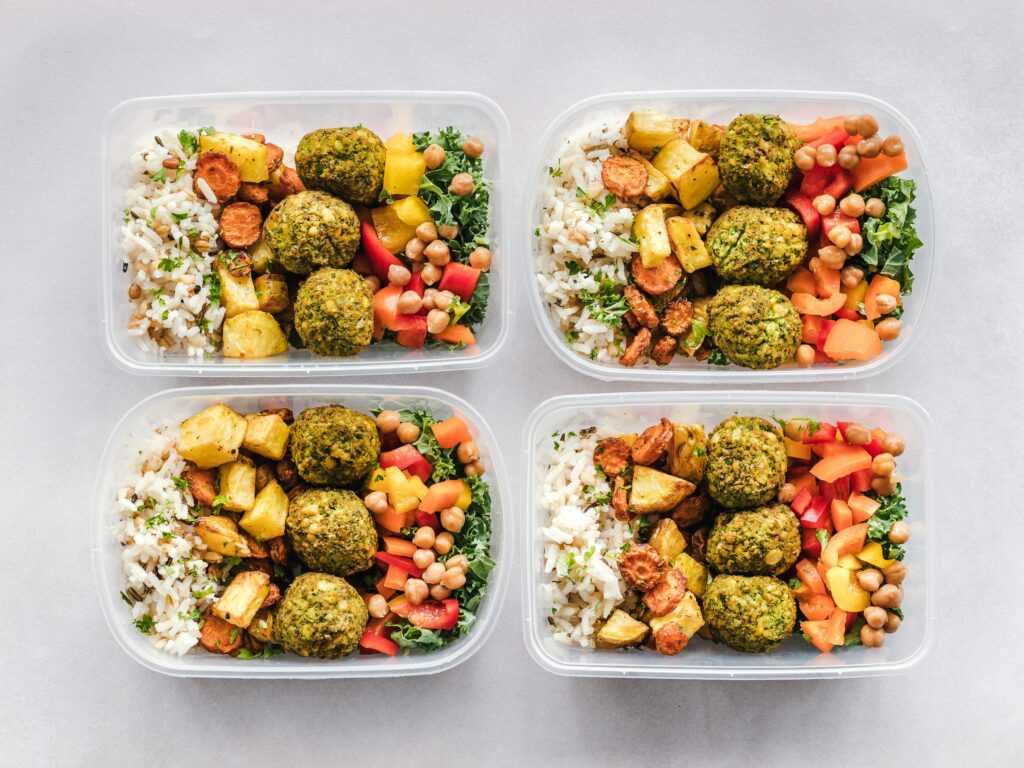Many adults with ADHD feel drained by the constant need to decide what to eat. Each meal can turn into a cycle of indecision, leading to skipped meals, last-minute takeout, or frustration in the kitchen. In a city like Los Angeles, where long commutes, late hours, and countless dining options add extra noise; a weekly meal plan creates calm and cuts the urge for impulsive choices. It removes the stress of daily food decisions and replaces it with a simple, repeatable system.
Instead of facing dozens of choices every day, a structured plan provides clear options that save time, energy, and focus. It creates a predictable routine while still leaving room for flexibility, which is especially helpful when energy levels or cravings shift. As a result, meals become easier to manage and less overwhelming.
This approach not only cuts down on stress but also supports healthier eating habits. With fewer choices to make, adults with ADHD can focus on enjoying meals rather than getting stuck in the decision process. The following sections will explain how meal planning achieves this, along with practical strategies to make it work week after week.
How Weekly Meal Planning Reduces Decision Fatigue for Adults with ADHD
A weekly meal plan reduces the number of food choices adults with ADHD face each day. By setting meals in advance, it creates a predictable system that saves mental energy, lowers stress, and supports healthier eating habits.
Understanding Decision Fatigue in ADHD
Adults with ADHD often face decision fatigue because even small choices can drain focus. Deciding what to eat multiple times a day adds to this mental load and can lead to skipped meals, takeout, or less nutritious options.
Decision fatigue happens when the brain becomes overloaded by repeated decisions. For someone with ADHD, this can feel more intense because attention and organization already demand extra effort.
A weekly meal plan reduces the number of food-related decisions. Instead of thinking about what to cook at every meal, the plan provides a clear guide. This structure helps conserve mental energy for other tasks that require focus.
Support from professionals can also make a difference. Access to ADHD psychiatry services in Los Angeles helps individuals manage symptoms that contribute to decision fatigue, while meal planning provides a practical daily tool.
The Role of Structure and Routine
Structure plays a key role in ADHD management. A weekly meal plan creates a predictable routine that reduces uncertainty and builds consistency around eating.
Instead of reacting to hunger with last-minute choices, meals are already scheduled. This predictability can improve nutrition, save time, and reduce stress at the end of the day.
Routine also supports better energy levels. Eating balanced meals at regular times prevents skipped meals that often lead to fatigue or overeating later. For many adults with ADHD, this consistency helps stabilize mood and focus throughout the day.
A written or digital plan can reinforce this structure. Some people prefer a simple chart on the fridge, while others use grocery list apps that connect directly to their weekly plan. Both methods make it easier to stay on track.
Minimizing Overwhelm with Pre-Selected Meals
Pre-selecting meals removes the pressure of making constant food decisions. Instead of standing in front of the fridge with too many options, the plan directs attention to a small set of choices.
This approach works well because fewer options reduce overwhelm. For example, choosing three breakfast options, four lunch ideas, and a few quick dinners gives variety without creating stress.
A meal plan also cuts down on food waste. Buying only the ingredients needed for the week prevents clutter in the kitchen and saves money. Frozen vegetables, pre-cooked proteins, and simple staples like rice or tortillas make it easier to prepare meals without extra thought.
By limiting decisions and offering ready-made solutions, weekly meal planning creates a calmer environment that supports both focus and daily functioning.
Strategies for ADHD-Friendly Weekly Meal Planning
A weekly plan works best when meals are simple, structured, and repeatable. Balanced nutrition, easy preparation methods, organized shopping, and steady snacks all reduce mental load while supporting brain health and steady energy.
Building Balanced Meals for Cognitive Function
Balanced meals help support focus and brain function. A simple formula uses three parts: protein source, complex carbohydrates, and fruits or vegetables. Adding healthy fats such as nuts, seeds, or avocado provides steady fuel for the brain.
Proteins like chicken, eggs, beans, or fish supply the amino acids needed for neurotransmitter production. Whole grains such as brown rice, oats, or whole wheat bread give longer-lasting energy compared to refined carbs.
Colorful vegetables and fruits provide antioxidants that protect brain cells. Leafy greens, berries, and carrots can be rotated through the week for variety. Omega-3 fatty acids from salmon, sardines, or walnuts also support memory and cognitive function.
A sample plate might include grilled salmon, quinoa, and roasted broccoli. Another might be scrambled eggs with whole-grain toast and sliced avocado. Simple combinations reduce decision fatigue while still keeping meals nutrient-dense.
Batch Cooking and Meal Prep Tools
Batch cooking removes the stress of daily meal preparation. Preparing proteins, grains, and vegetables in larger amounts saves time and reduces the number of decisions needed each day.
Examples include boiling eggs, roasting chicken, or cooking a pot of brown rice at the start of the week. These foods can be stored in containers and used in different meals. Frozen meals made in bulk, such as chili or soup, can be portioned and reheated later.
Helpful tools make this process easier. An Instapot or crockpot allows hands-off cooking for soups, stews, or shredded meats. An air fryer can quickly prepare vegetables or fish without much effort. Freezer-safe containers keep meals organized and labeled.
Prepping simple breakfast items like overnight oats or baked oatmeal also saves time. With a few hours of preparation, the week feels more structured, and healthy choices become automatic.
Simplifying Grocery Lists and Shopping
A clear grocery list prevents distraction and wasted food. Grouping items by category—produce, proteins, grains, frozen goods—speeds up shopping and reduces mental effort.
Focusing on versatile foods helps build multiple meals from fewer ingredients. For example, tortillas can work for wraps, quesadillas, or breakfast burritos. A bag of frozen vegetables can pair with rice, pasta, or eggs.
Choosing frozen or pre-cut produce cuts down on prep time while still supplying the same nutrients. Keeping a short rotation of staples such as whole grain bread, canned beans, yogurt, and nuts avoids decision overload.
Apps or a whiteboard on the fridge can keep lists visible. By sticking to a plan, adults with ADHD save both time and energy that would otherwise go into repeated choices.
Healthy Snacking and Sustained Energy
Snacks can support sustained energy and prevent late-night overeating. Pairing protein with complex carbohydrates or healthy fats helps stabilize blood sugar and improve focus.
Examples include:
- Greek yogurt with berries
- Apple slices with peanut butter
- Whole grain crackers with hummus
- Trail mix with nuts and dried fruit
Omega-3 rich snacks such as walnuts or chia pudding also support brain health. Antioxidant-rich options like blueberries or carrots with dip add extra benefits for cognitive function.
Pre-portioning snacks into small containers or bags makes them easier to grab without extra thought. Keeping a few ready-to-eat foods, such as boiled eggs or cottage cheese, in the fridge reduces reliance on less balanced choices.
Simple, nutrient-dense snacks spread through the day help maintain focus, steady energy, and a healthier relationship with food.
Conclusion
A weekly meal plan helps adults with ADHD cut down on constant food decisions. By setting meals in advance, they face fewer last-minute choices that often drain focus and energy.
This structure supports better follow-through. Instead of scrambling for ideas, they can rely on a simple system that balances nutrition, convenience, and variety.
As a result, mealtime feels less stressful and more manageable. With fewer decisions to make, they can direct attention toward other priorities in daily life.




